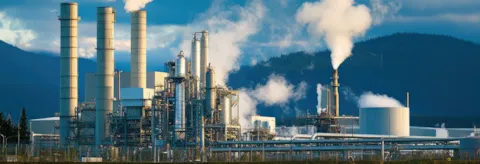DNV introduces new service specification SE-0696 to mitigate risks in CCUS projects with standardized independent technical assurance
Industry-first framework addresses critical gaps in carbon capture verification, enabling safer, more bankable projects
DNV has released a new service specification (DNV-SE-0696) for the verification and certification of carbon capture, utilization, and storage (CCUS) facilities. The document provides a structured methodology to de-risk CCUS projects across design, construction, and operation—addressing a key industry need as carbon capture scales globally.
With CCS projected to grow from 41 MtCO2/yr today to 1,300 MtCO2/yr in 2050, mitigating 6% of global CO₂ emissions according to DNV’s Energy Transition Outlook: CCS to 2050 report, standardized verification is critical to ensure safety, regulatory compliance, and investor confidence. SE-0696 fills this gap by:
- Defining risk-based verification levels (High/Medium/Low) for CCUS subsystems, from CO₂ capture to temporary storage.
- Aligning with existing DNV documents (e.g. DNV-SE-0479 for process facilities) while addressing CCUS-specific challenges like material selection and CO₂ liquefaction.
- Supporting both onshore and offshore applications, including hybrid projects (e.g., blue hydrogen with CCUS).
- Supporting stakeholder management with defined scopes and DNV statements and certificates.
The new service specification ensures that CCUS projects are developed with rigour, safety, and transparency, supporting industry players as they scale up deployment.

"CCUS is no longer a niche technology—it’s a decarbonization imperative," said Lucy Craig Senior Vice President, Growth, Innovation & Digitalization, Energy Systems at DNV. "SE-0696 gives developers a clear roadmap to verify facility integrity, reducing uncertainties that could delay Final Investment Decisions. This is how we accelerate the energy transition pragmatically."
Up to the end of the decade, cumulative investments in CCS are expected to reach USD 80 billion (£60bn) and DNV forecasts that capture and storage capacity is expected to quadruple by 2030. CCS is crucial for reaching net-zero targets, especially in sectors that are challenging to decarbonize.
Key features of SE-0696
The specification covers all major CCUS subsystems, including:
- CO₂ capture and dehydration systems
- Compression and liquefaction units
- Emergency shutdown and relief systems
- Safety assessments and barriers
- Material selection
- Injection facilities
DNV-SE-0696 complements DNV’s broader CCUS standards (e.g., DNV-SE-0473 for geological storage) and integrates with DNV’s risk-based verification philosophy (DNV-SE-0474).

"Early projects must be deployed successfully in order for this critical technology to be scaled," added Jamie Burrows, Global Segment Lead CCUS, Energy Systems at DNV. "By applying our decades of process facility expertise and deep knowledge of CCUS, we’re helping clients mitigate risks whether retrofitting capture equipment at a cement plant or designing a new offshore injection facility"
DNV’s CCUS verification and certification services are grounded in its long-standing expertise in risk management, assurance, and energy infrastructure and build on DNV’s many joint industry projects focussed on CCUS. The release of DNV-SE-0696 reflects the company’s commitment to accelerating the energy transition and supporting the development of safe and bankable CCUS projects worldwide.
